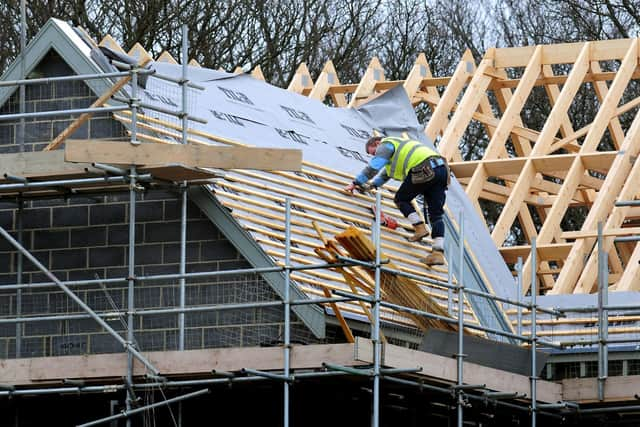The Government’s new ‘Help to’ scheme for self-builders is about to launch - here's how to apply
The Government’s Help to Build prospectus was published this week and it reveals that would-be self and custom builders can apply for its new equity loan scheme this winter.
While the exact date has not yet been announced, Homes England say that it is imminent and has advised those interested to register with them at www.help-to-build.homesengland.org.uk. Those registered will then be contacted when applications are open.
Advertisement
Hide AdAdvertisement
Hide AdAlthough this is a four-year scheme, speed could be of the essence as the equity loan fund is capped at £150m. Similar to the Help to Buy new-build homes scheme, the new fund will enable you to apply for an equity loan of between five per cent and 20 per cent of the estimated land and building cost.


The loan is interest-free for five years. In London, where costs are higher, the loan is up to 40 per cent of land and build costs. This will allow borrowers to access low-deposit mortgages on both self and custom built homes.
Self-build is when you organise the build yourself from finding a plot and applying for planning permission to hiring architects and a builder. Custom build is either a single dwelling commissioned by an individual and built by a developer or one of a group of homes on serviced plots that are built by a developer with the offer of bespoke design for the buyer.
Plans for the Help to Build equity loan scheme were announced in April this year and the Government hopes that it will result in 30,000-40,000 new homes a year in the UK. The prospectus includes more detailed information on how the scheme works and who is eligible to apply. Here are some of the key points:
Advertisement
Hide AdAdvertisement
Hide Ad*You can apply for Help to Build if you are planning to live in the property as your only home and if you secure a self-build mortgage from a lender registered with Help to Build. Most lenders will need you to have outline planning permission for the land you want to build on, before they will assess or approve your self-build mortgage. Successful applicants will be offered an equity loan based on the estimated costs to buy a plot of land and build the home. The loan will be given after your property has been built.
*If you are eligible, you can spend up to £600,000 on your new home. This must include the cost of the land, if you don’t already own it, and no more than £400,000 on the cost to build it.
You will need a deposit of at least five per cent for the equity loan, along with a self-build mortgage.
*After being offered the equity loan, you have three years to buy the land, if needed, and build your home. When the property is complete, the Government will pay your mortgage lender the equity loan amount offered to you, and your self-build mortgage will switch to a repayment mortgage. You will begin to pay interest on the equity loan from year six.
Advertisement
Hide AdAdvertisement
Hide Ad*The amount lent to you is based on a percentage of your estimated land and build costs. However, the amount you pay back is worked out as a percentage of your home’s market value at the time you choose to repay. If the market value of your home rises above the estimated land and build costs, so does the amount you owe on your equity loan. If the value of your home falls below the estimated land and build costs, the amount you owe on your equity loan falls too. Note that the value of a self-build home can be significantly higher than the cost to build it.
The loan must be repaid at the end of the mortgage term, which is usually 25 years, and there is a £1 monthly management fee for the life of the loan.
Andrew Baddeley-Chappell, CEO of the National Custom and Self Build Association, which campaigned for Help to Build, said: “The greater choice enabled by this scheme will lead to more affordable and better homes that are more wanted and more sustainable.
“This scheme addresses a key constraint for many custom and self-builders and should in turn empower landowners, enablers and local authorities to ensure that sufficient land with planning permission is made available to meet the demand and to build back better.”
Advertisement
Hide AdAdvertisement
Hide Ad"Contrary to common perception, in most cases custom and self-build is not about people undertaking the build themselves. Rather, it is about the homeowner having control over the design and specification of their project, enabling them to create the home they want, rather than the one someone else believes they would like.
“It means that new homes will now be part of the solution for the large numbers of people whose cultural, ecological, physical or emotional needs are not currently met by the new-build market.”
He adds: "Custom and self-build is common everywhere else in the world.”
*Anyone interested in self or custom building can visit the National Custom and Self Build Association website. Its aim is to make custom and self-build a mainstream choice. Visit www.selfbuildportal.org.uk.
Comment Guidelines
National World encourages reader discussion on our stories. User feedback, insights and back-and-forth exchanges add a rich layer of context to reporting. Please review our Community Guidelines before commenting.
